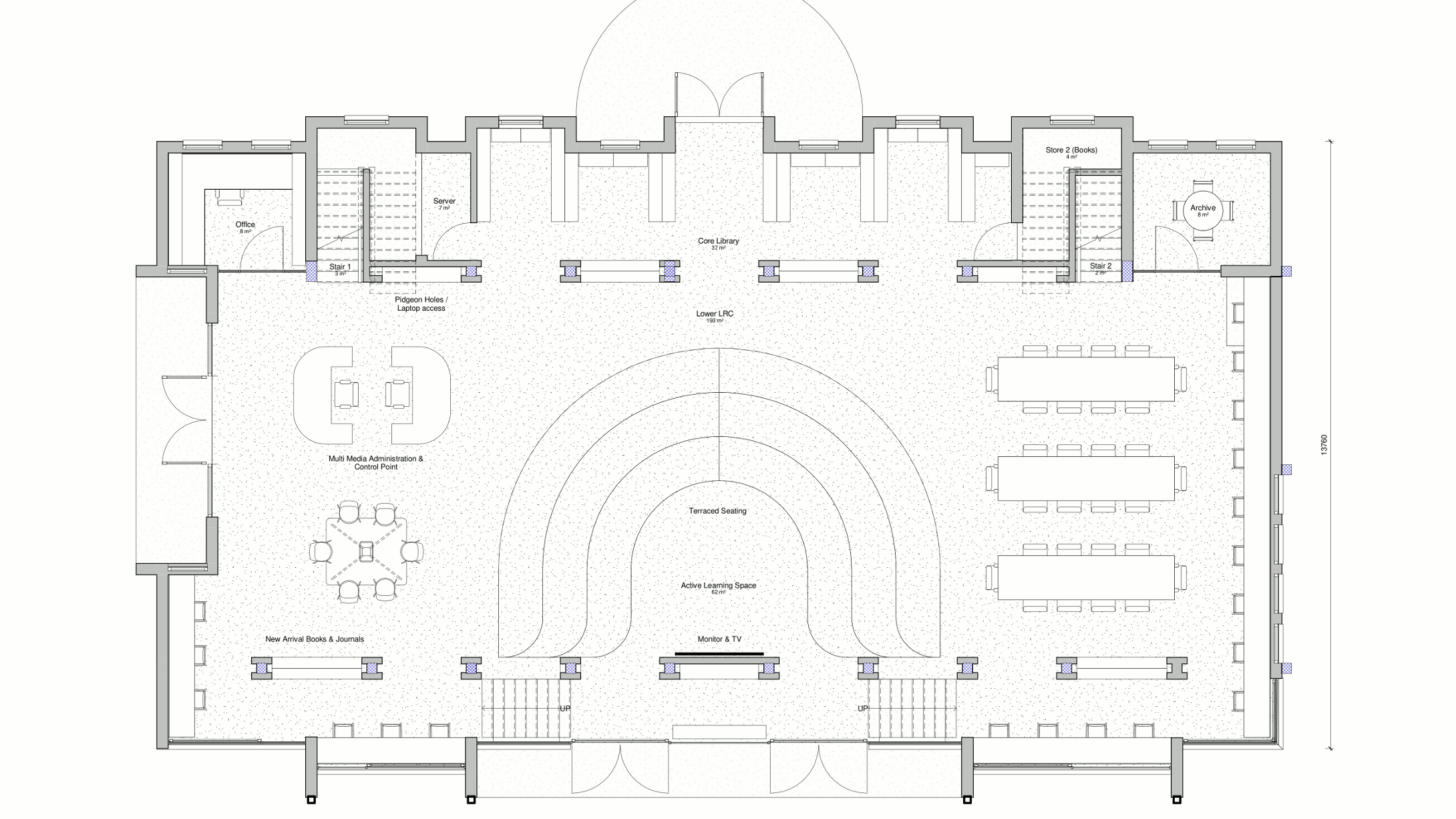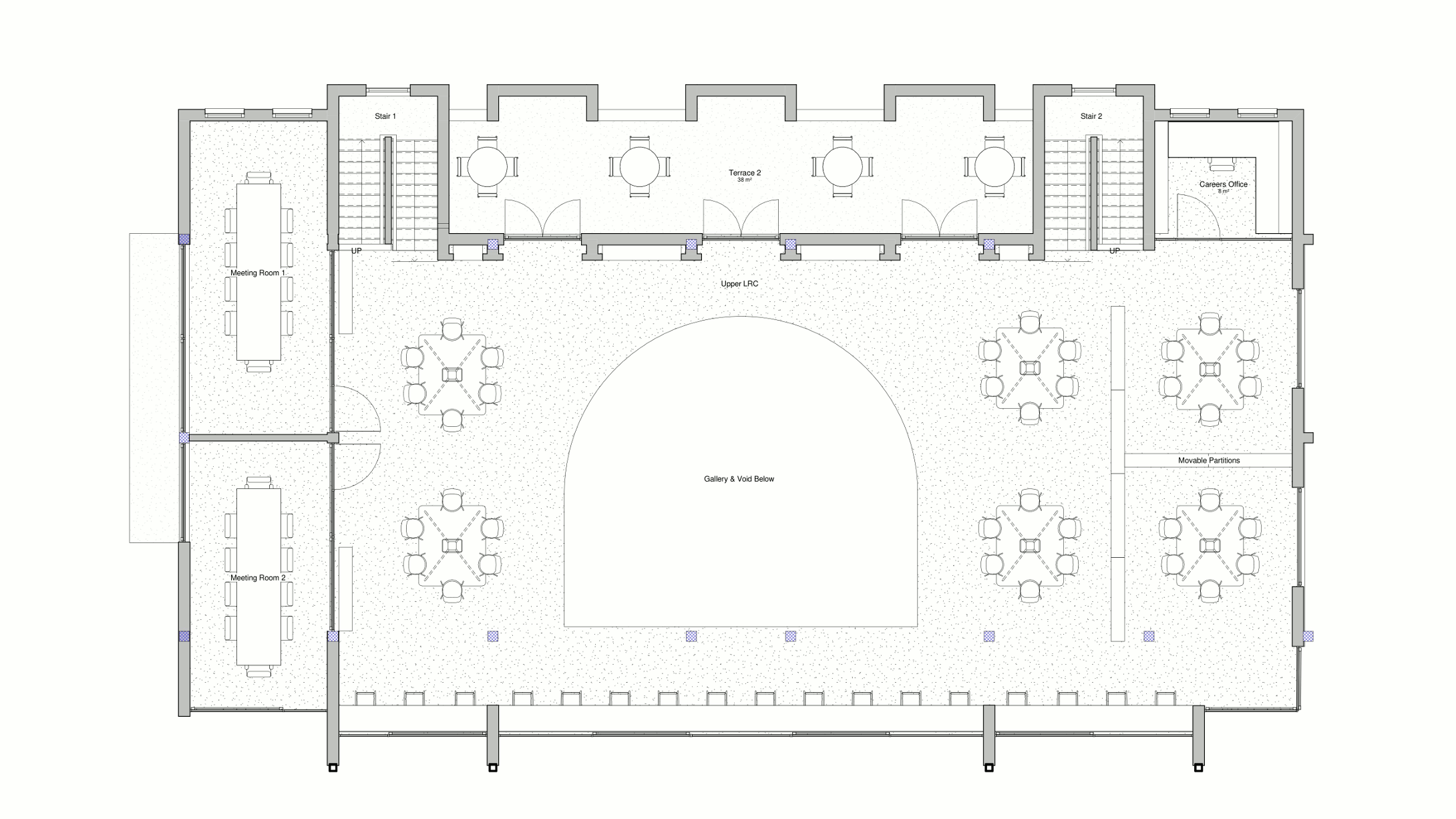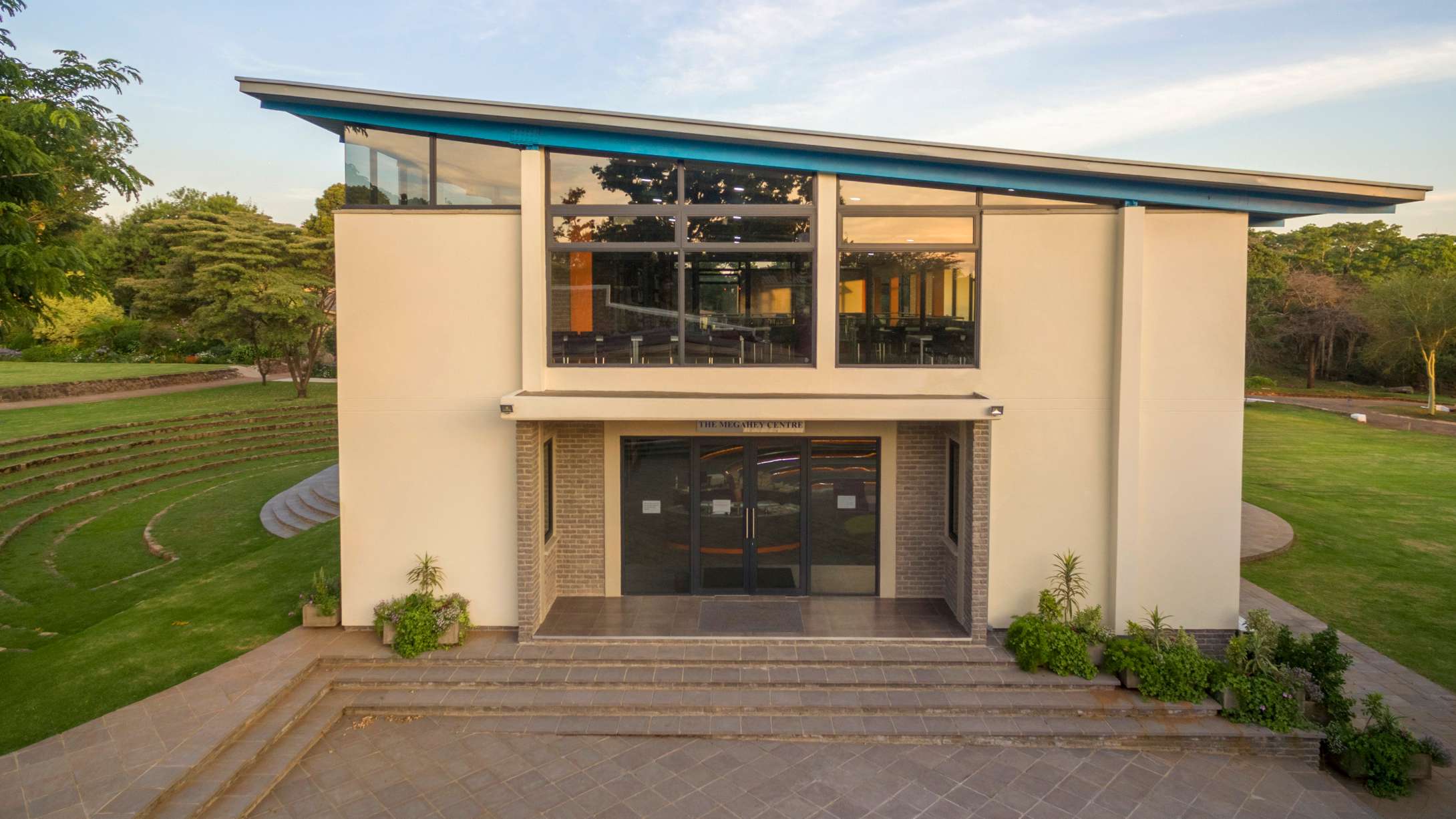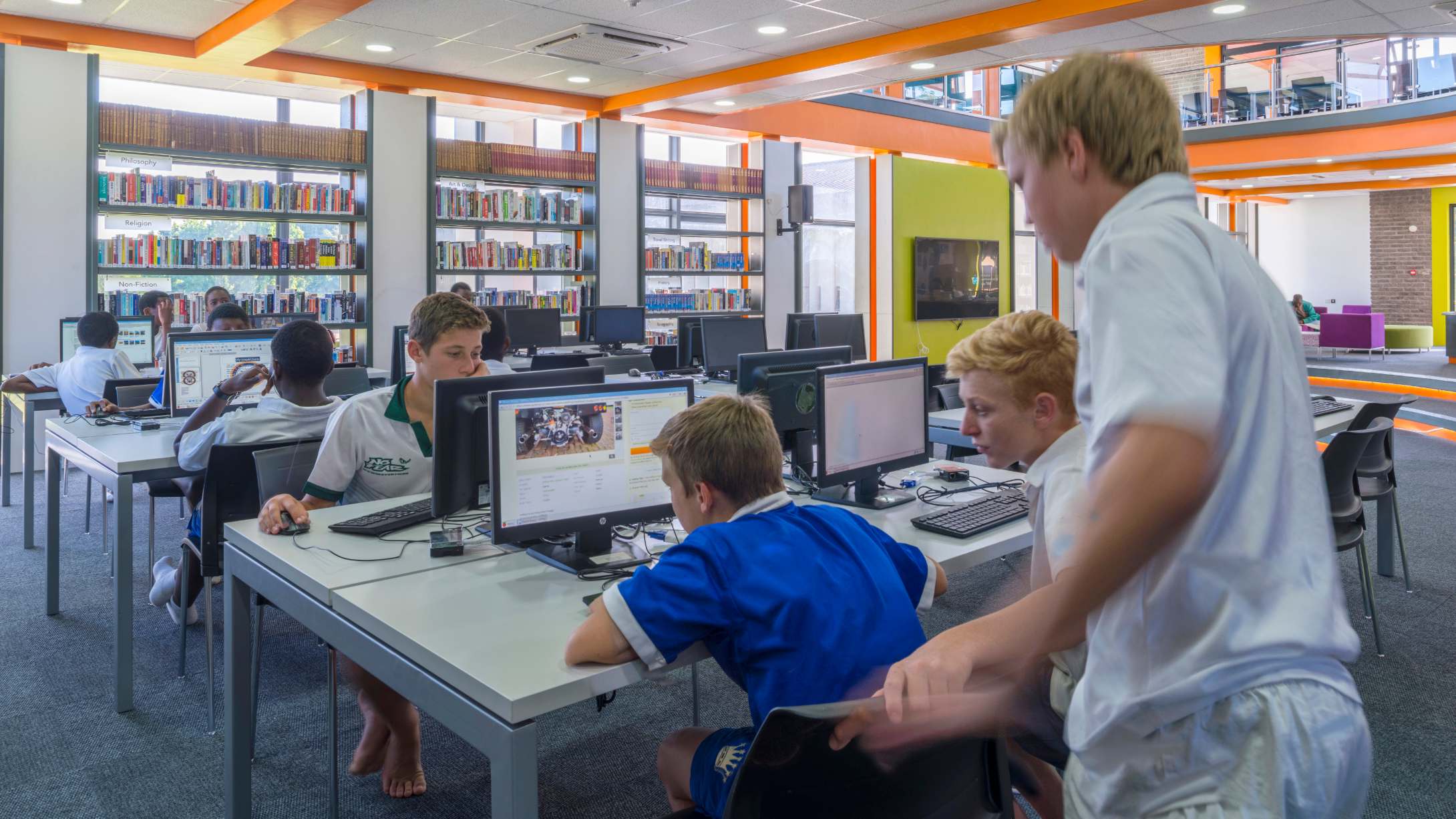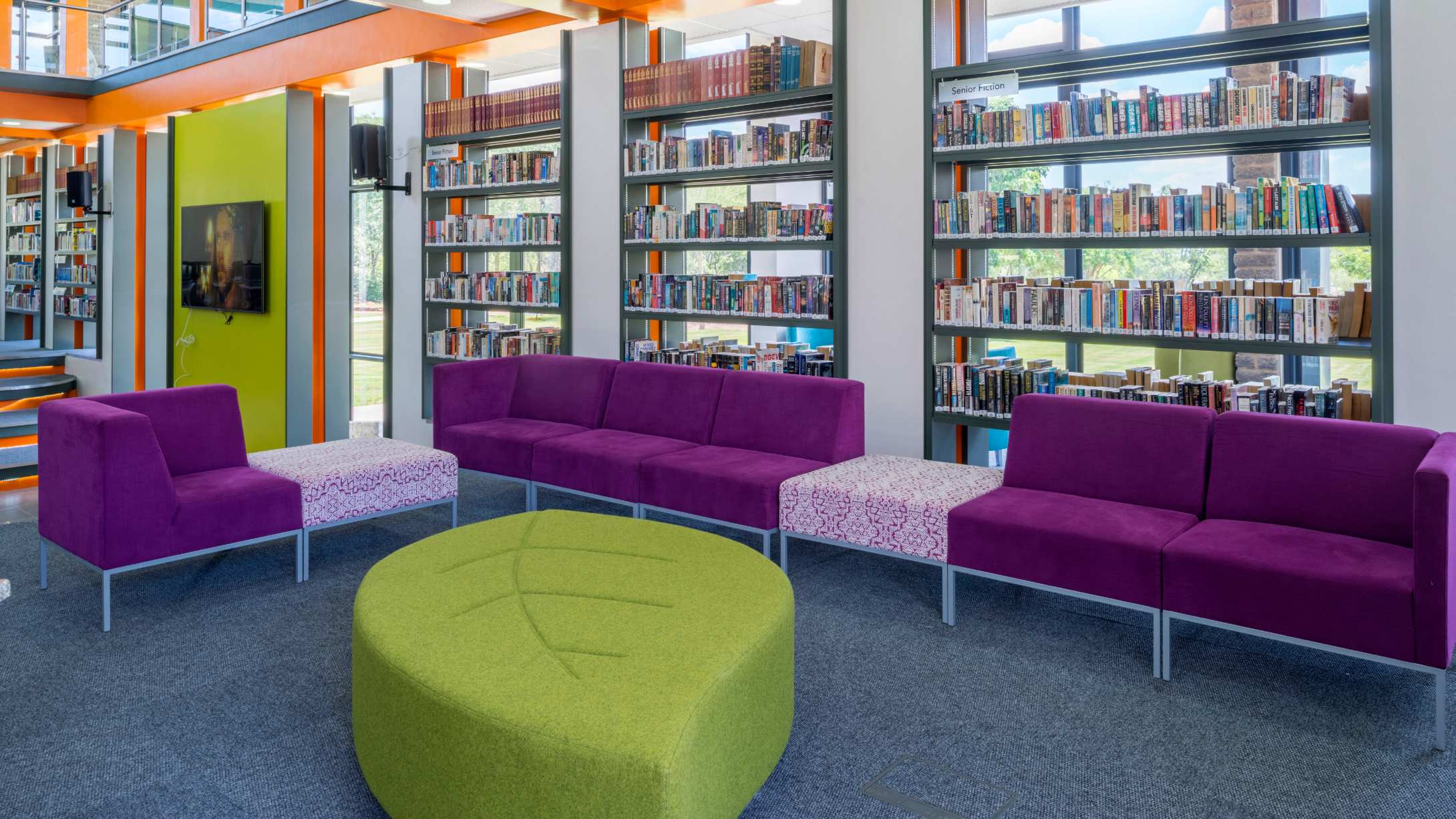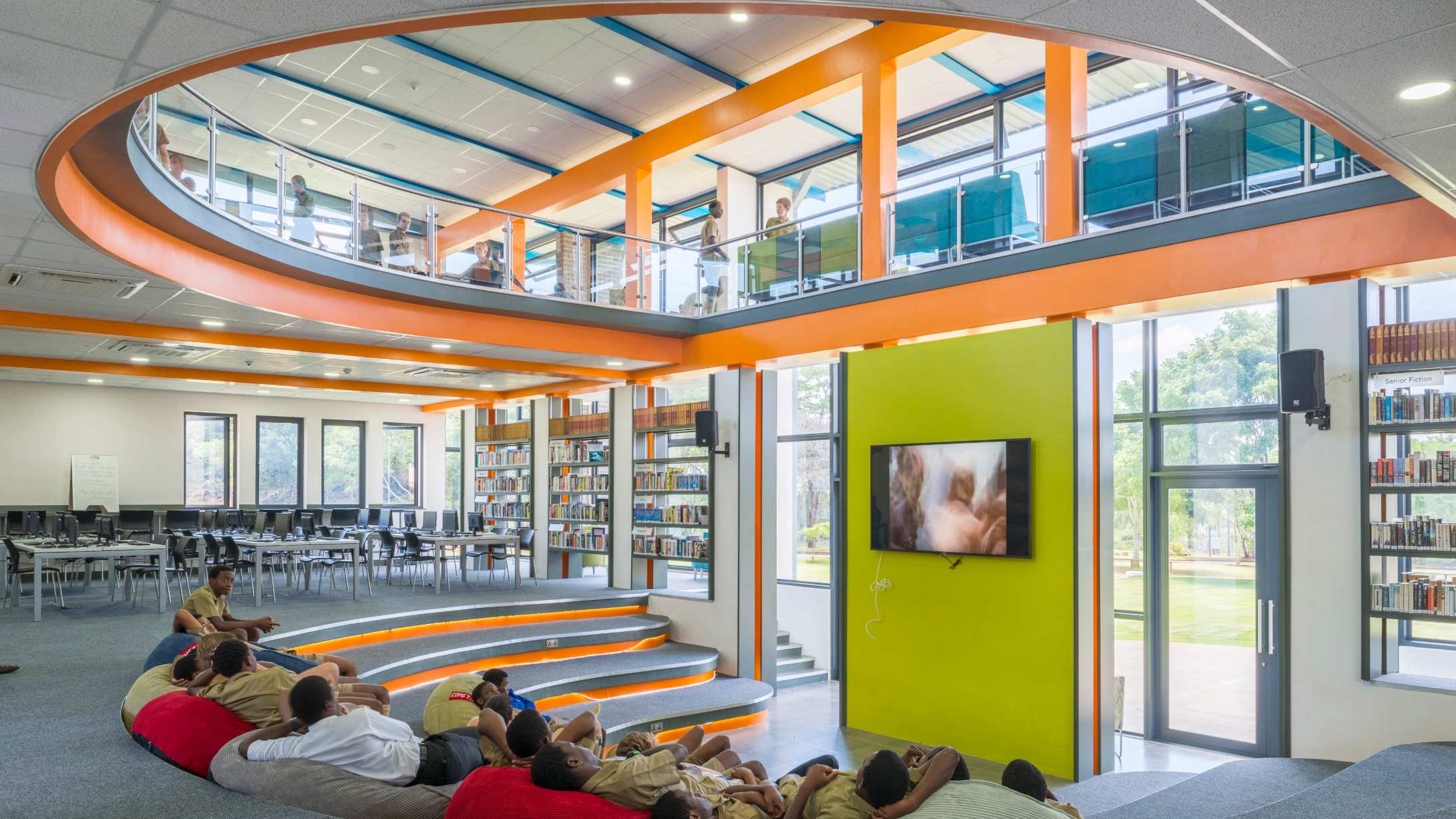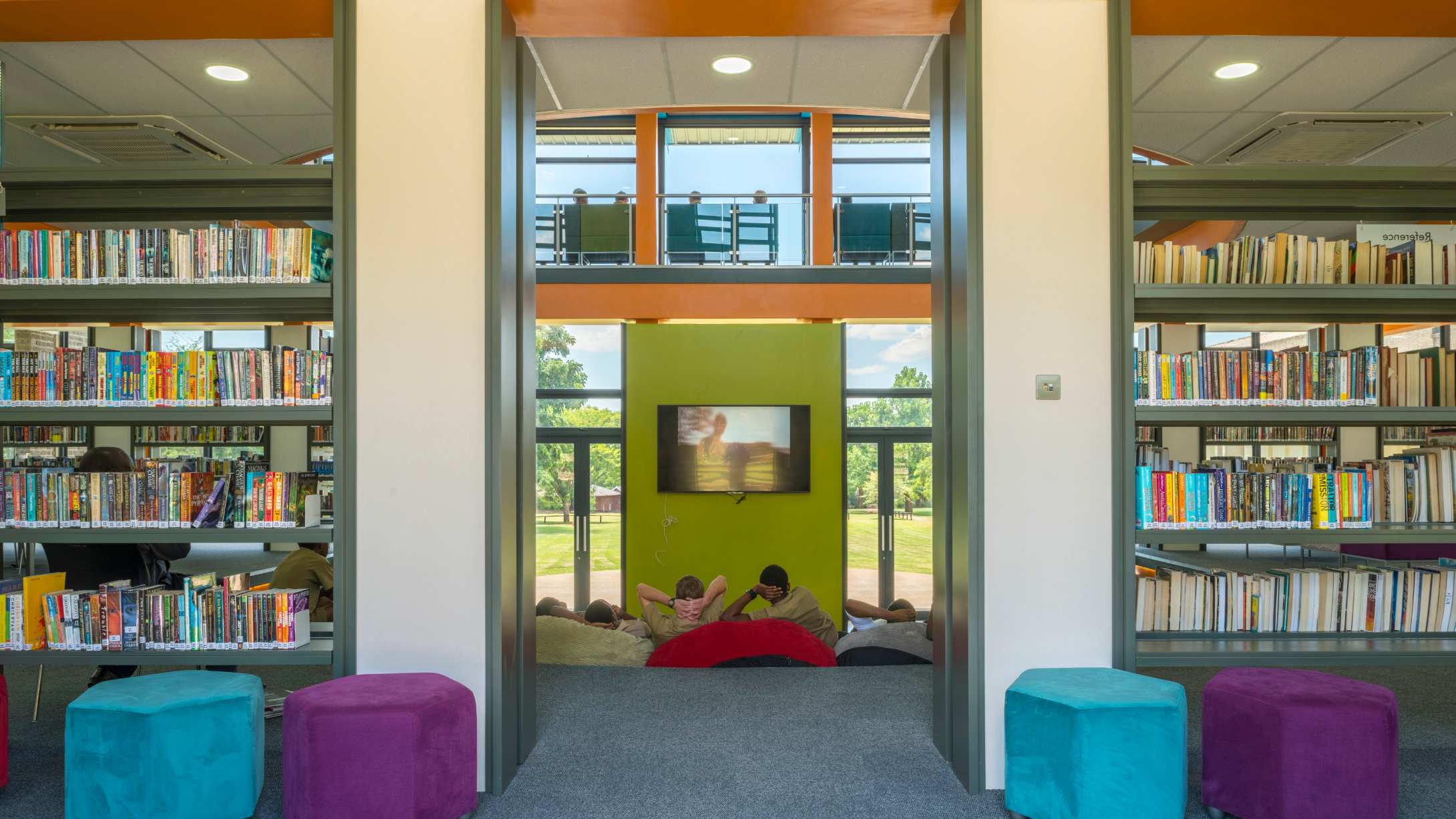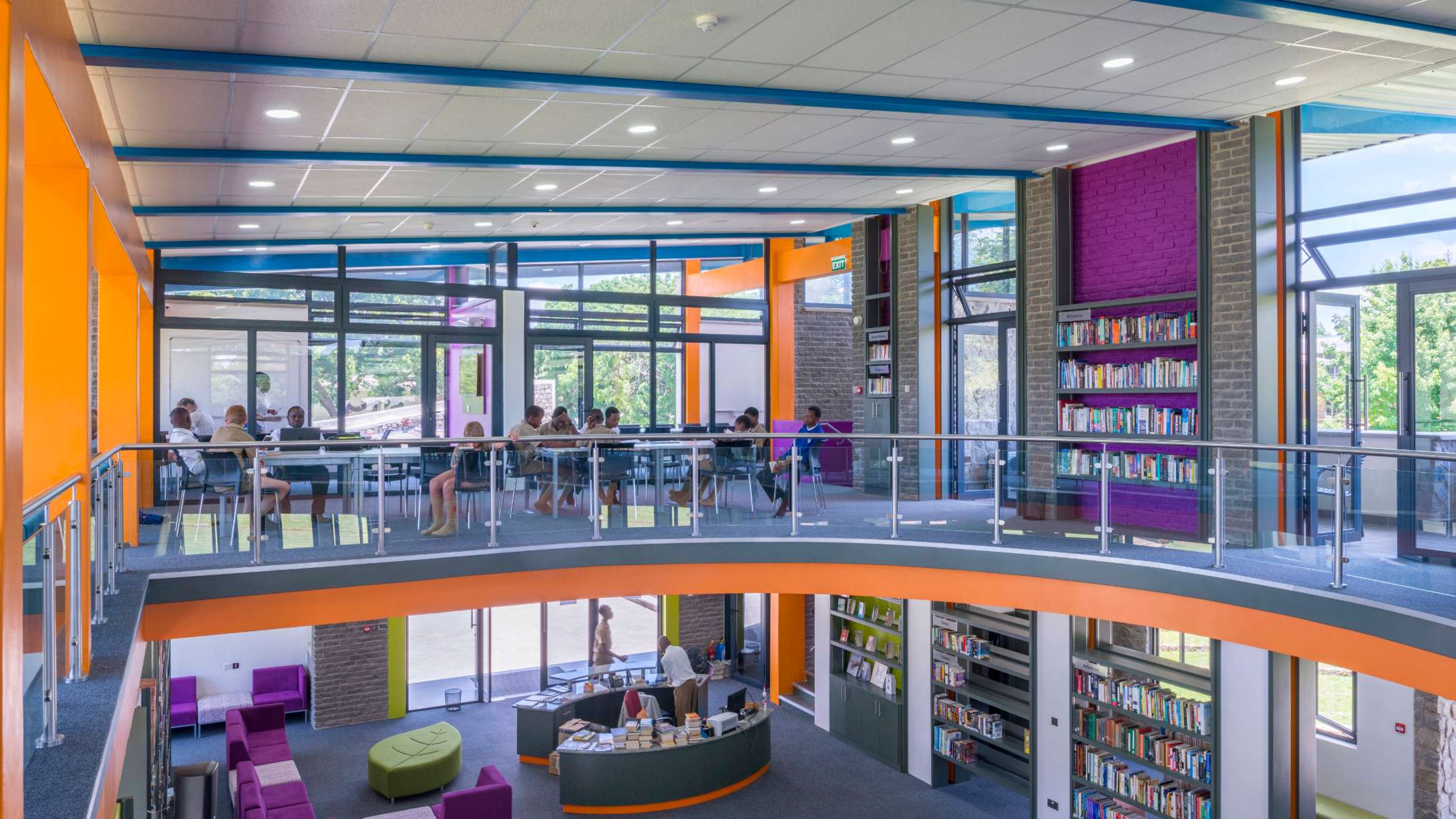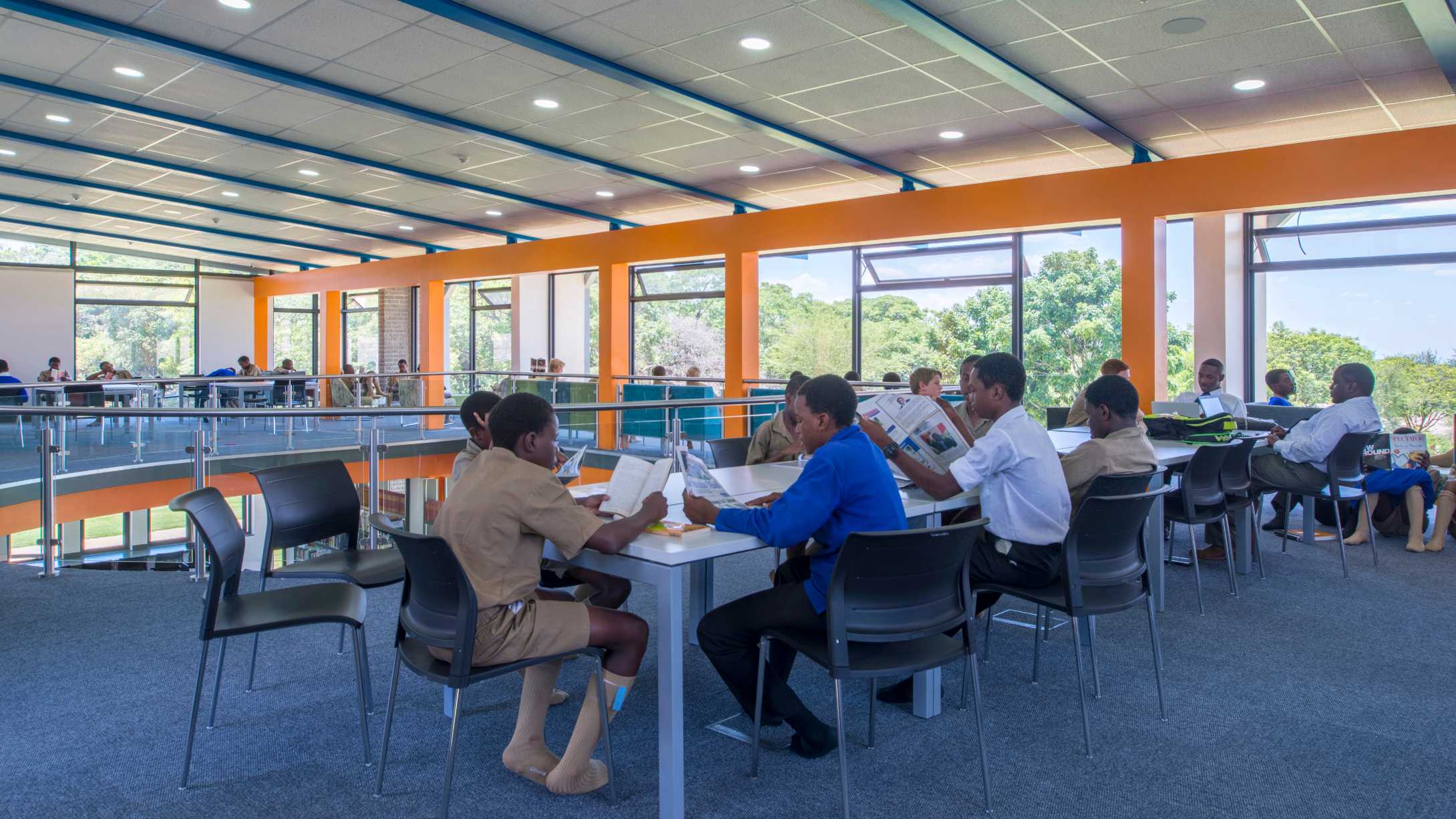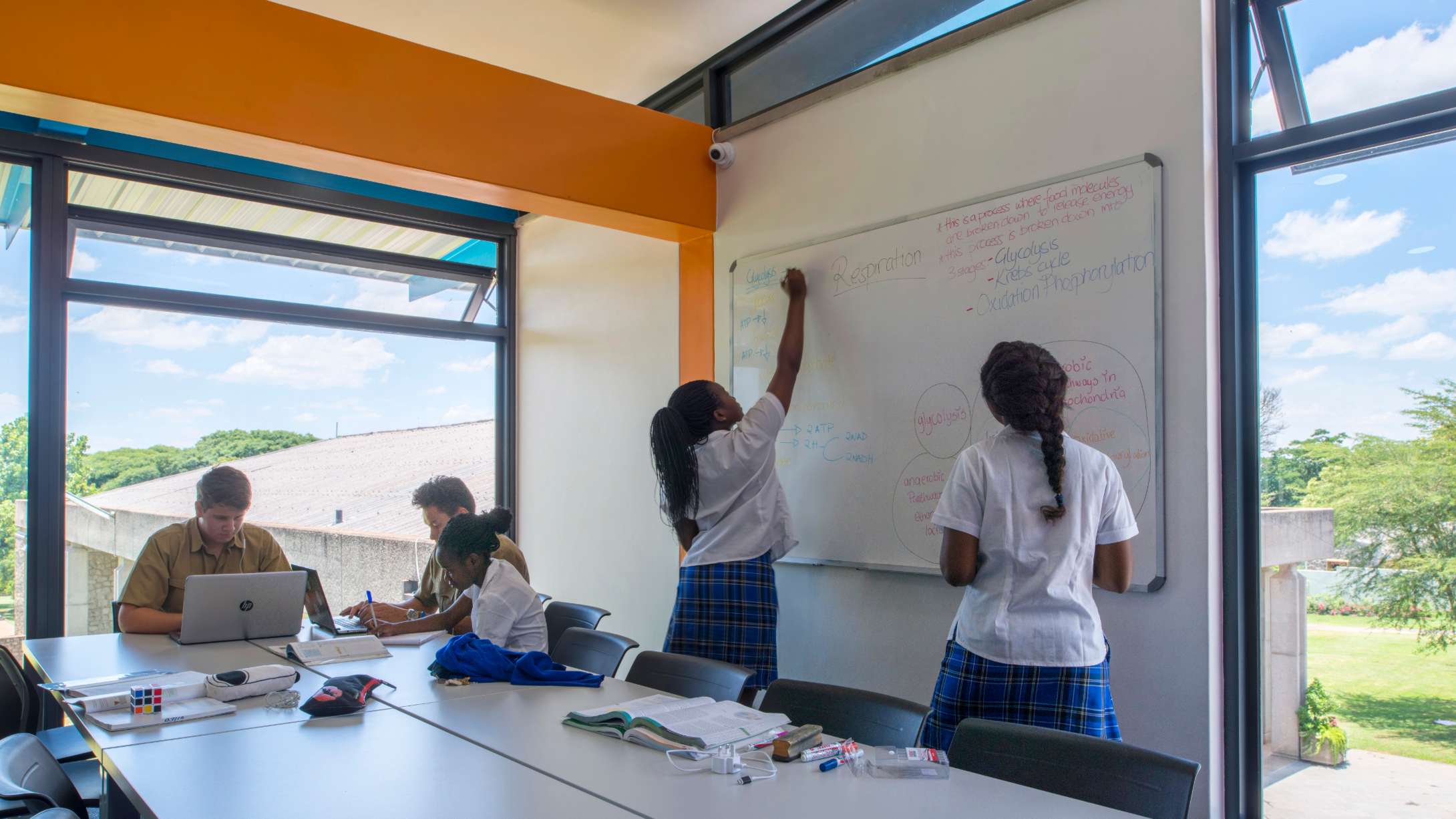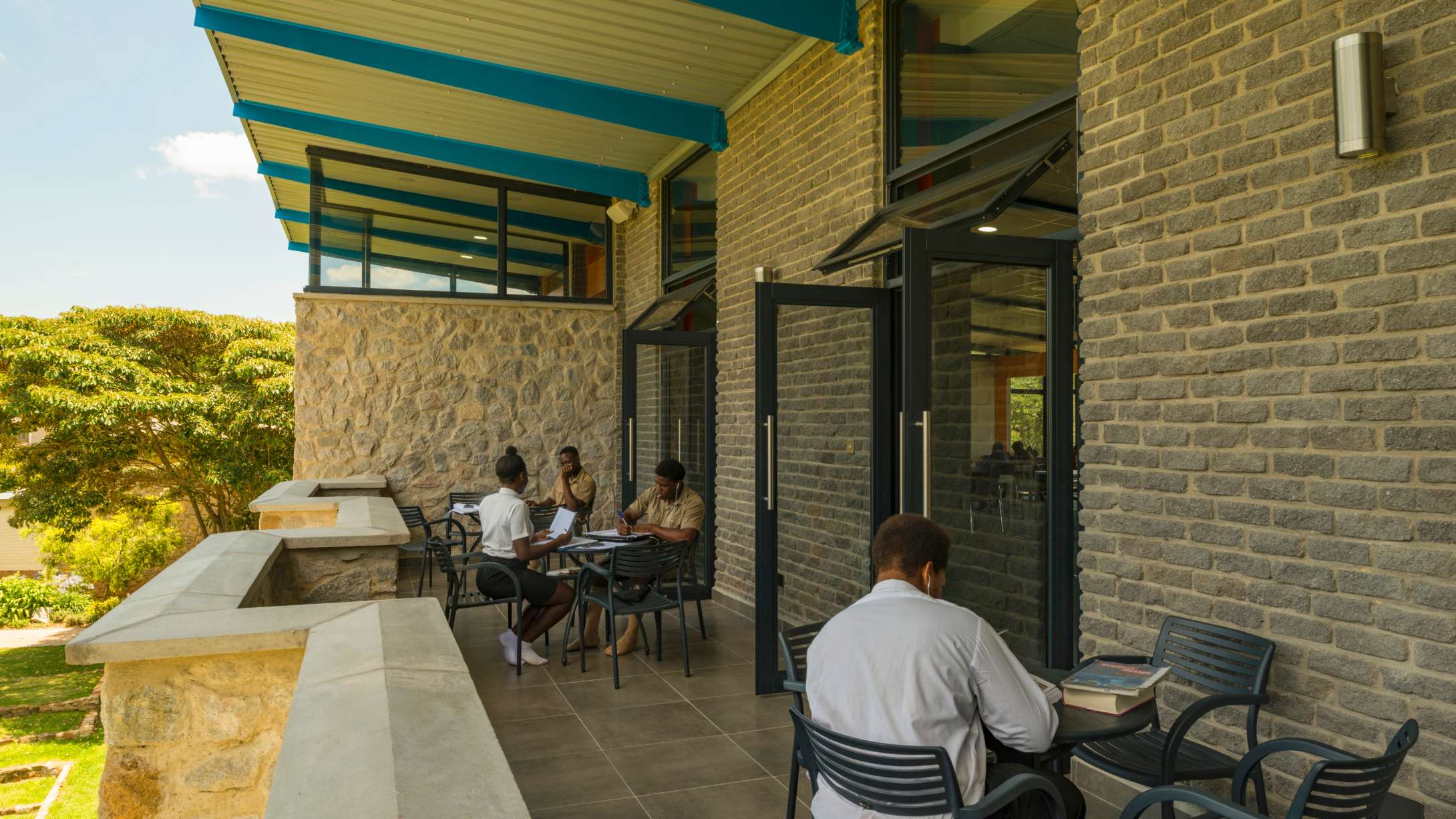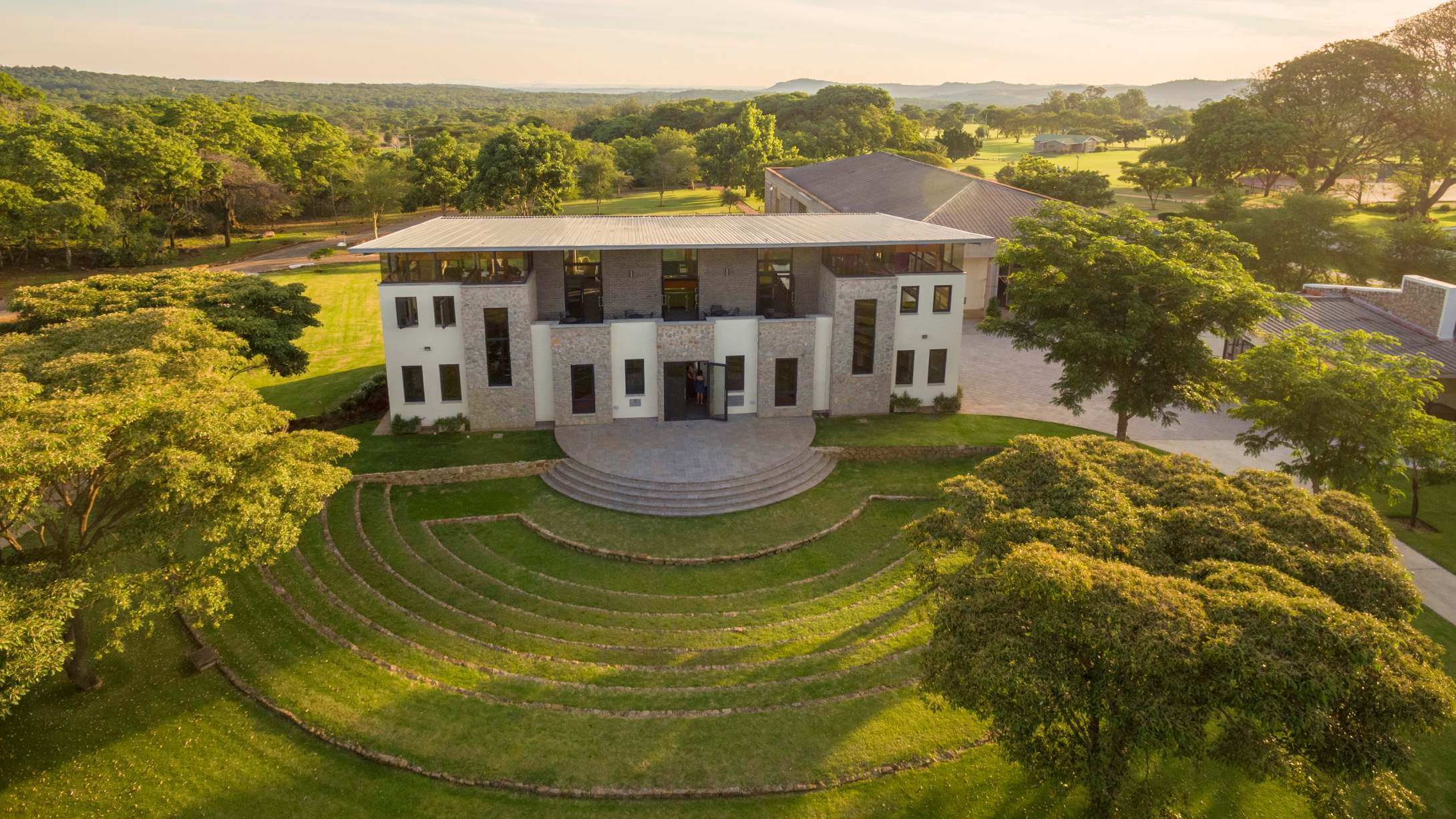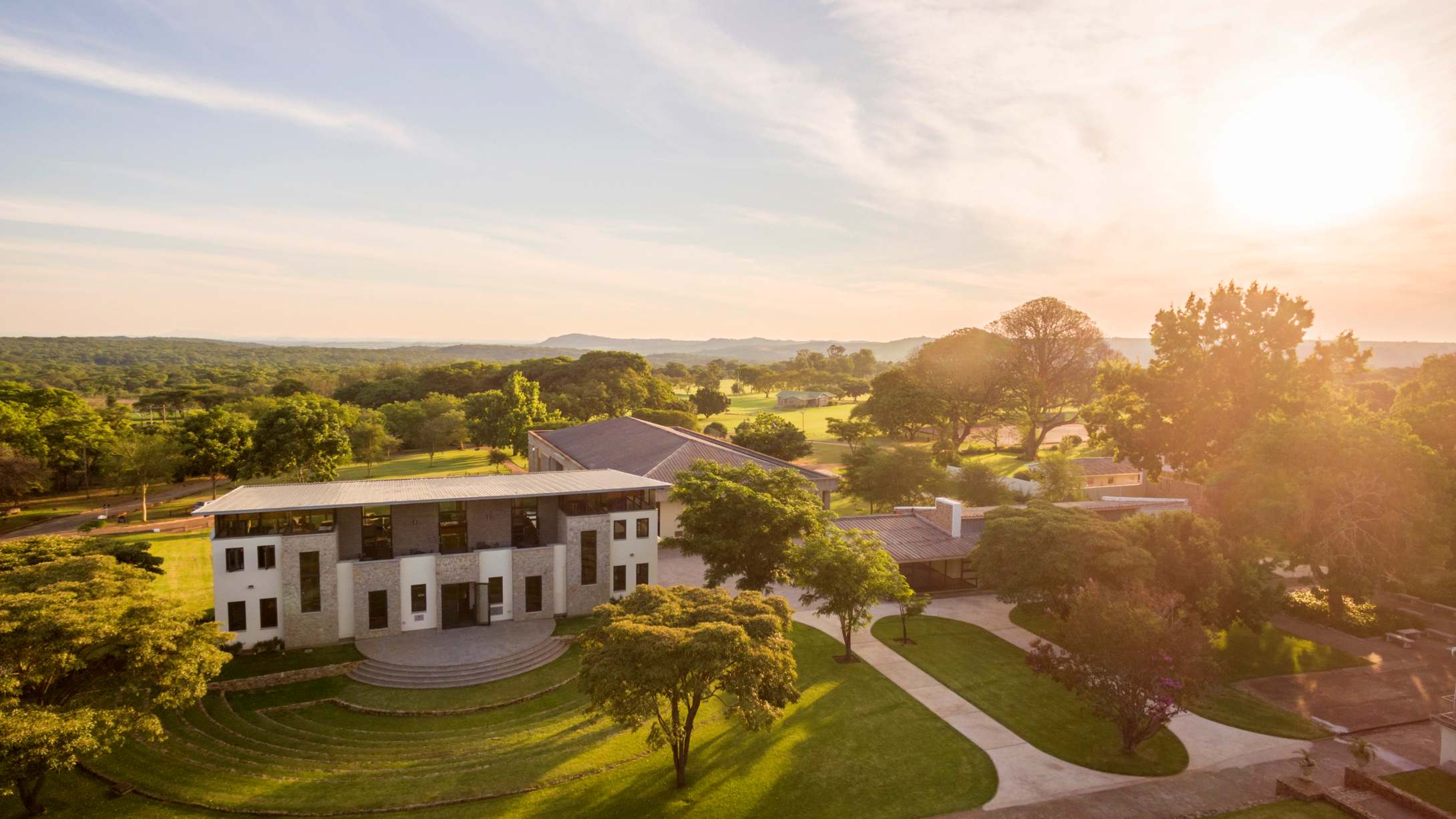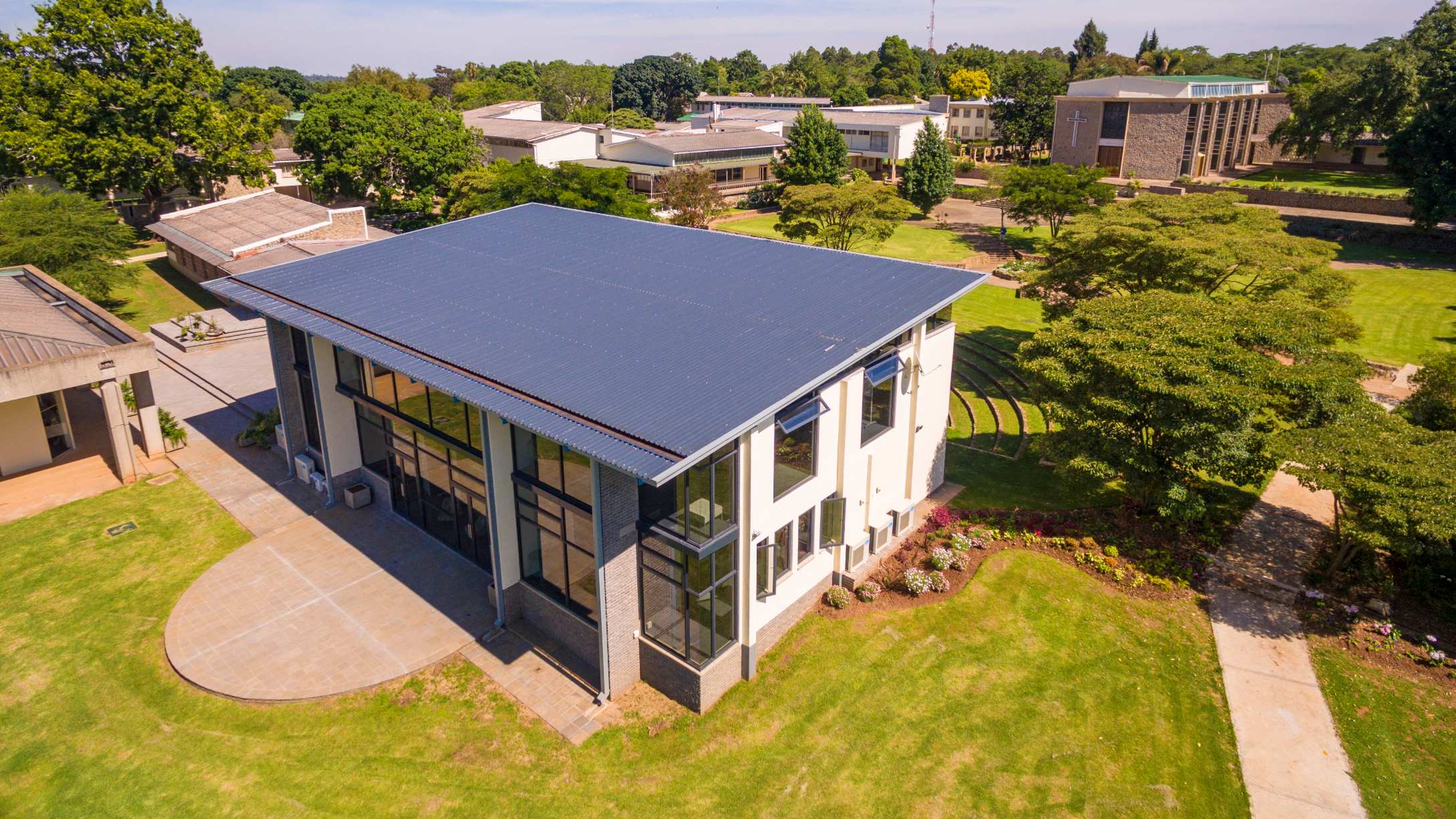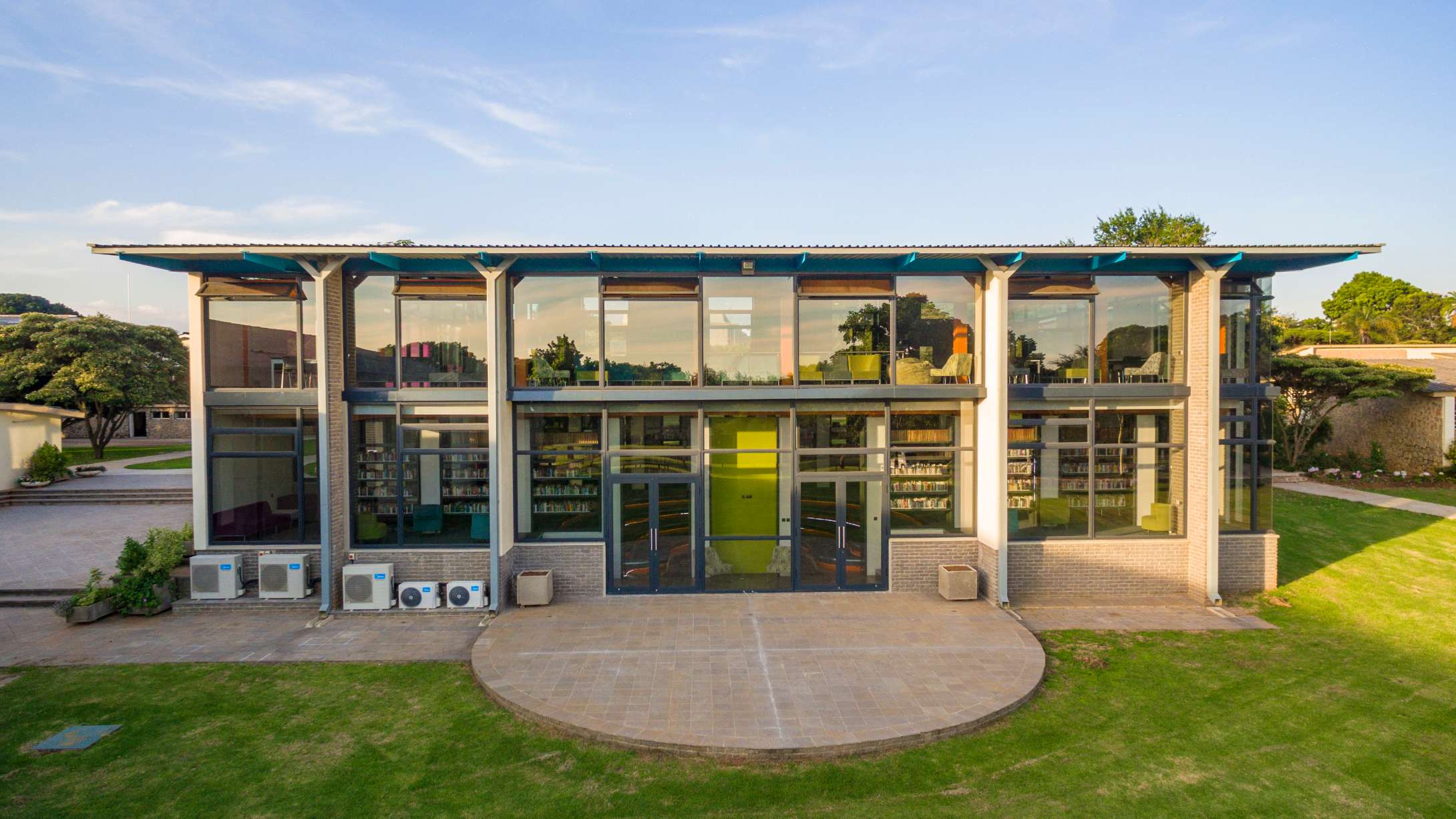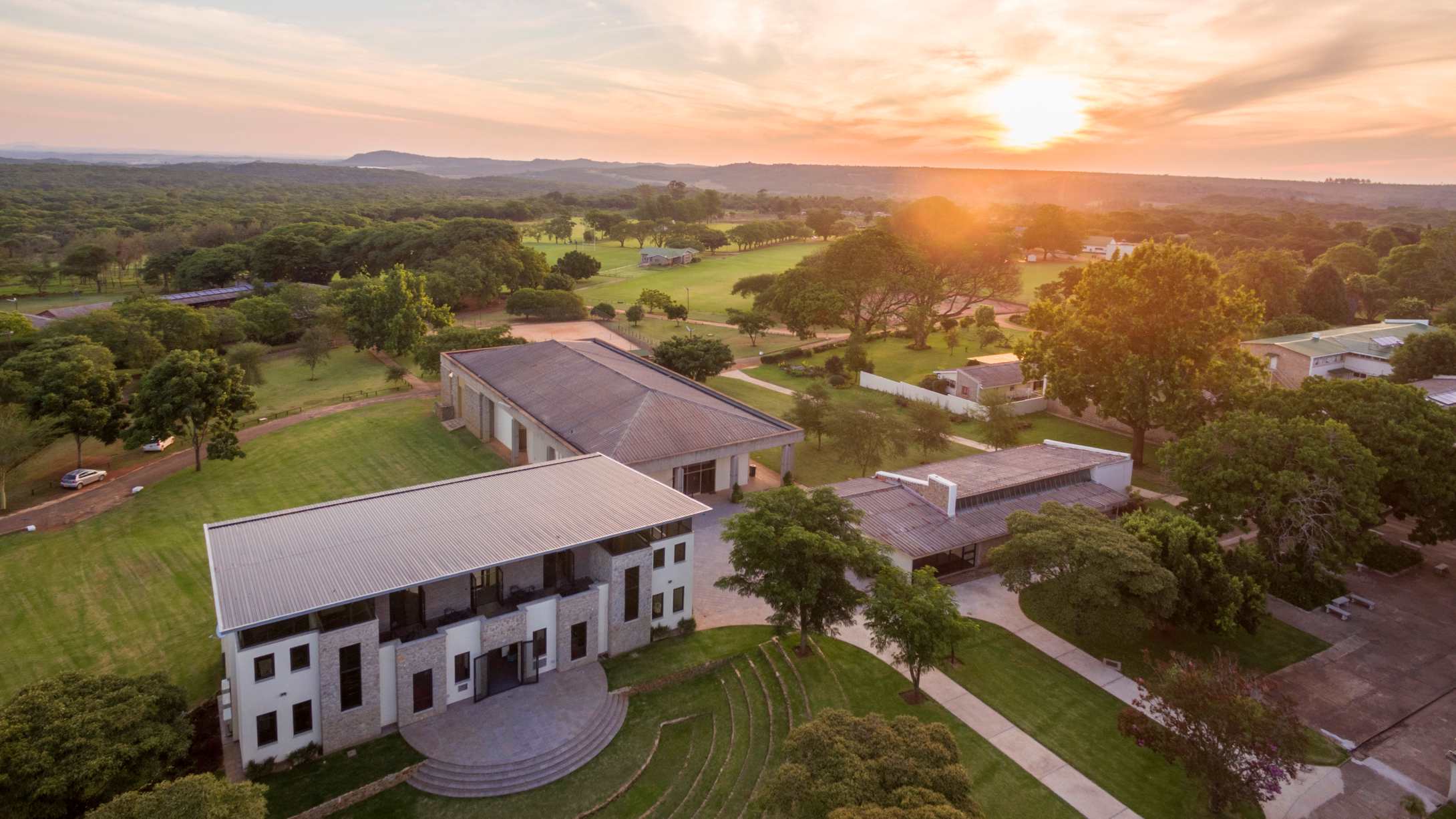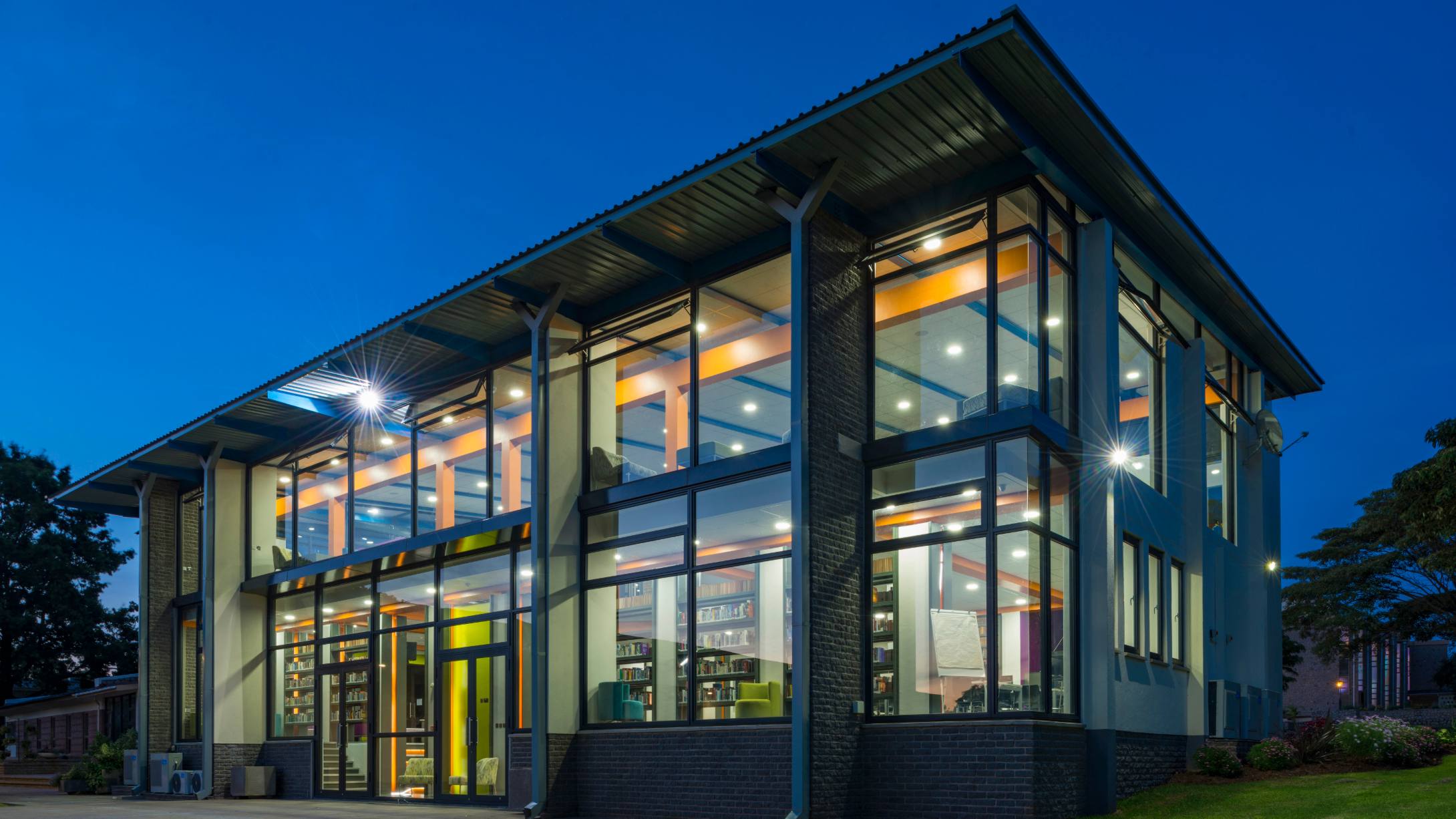Architectural and Planning Studio (APS), was recently commissioned to design the ‘Megahey Learning Resource Centre’ (LRC), which was funded by anonymous donation to the Peterhouse (PH) Group of Schools, in Marondera, Zimbabwe.
The LRC was built in the name of ‘Alan Megahey’ a former Rector/Headmaster, and is intended to honour his considerable ability and contribution to the school, specifically in the fields of culture, intellect and innovation. The building was envisioned by the donor as a synthesis between traditional ‘library’ and modern ‘IT centre’ – as well as housing an archive of information and memorabilia collected by both Alan Megahey and Peterhouse School.
The building placement within the Schools campus complements the notional ‘Great Court’ at the Boys School, and re-activates an old stone amphitheatre to the North, where open-air theatrical productions were once performed. Whilst the granite cladding to the North, anchors the new building to its contextual surrounds, the glazed facade to the South, connects the building to its projected future and opens up, to the ambient light and distant views beyond.

 Drawings courtesy Architect Africa
Drawings courtesy Architect Africa
The building is intended to enhance and activate adjacent external spaces – thereby multiplying the buildings effective footprint threefold and increasing its extended student capacity. With this in mind the envelope opens up to landscaped gardens, and terraces, allowing the exploration of mixed media in a more casual outdoor environment.
The architectural approach aims to de-institutionalise the traditional library and weave contemporary forms of media and technology into the fabric of the building – making information of all kinds, more accessible to students and teachers than ever before, in an environment that is both stimulating and engaging.
 The LRC is realised as a series of individual and collective gathering spaces under one roof – Where a spectrum of learning resources and multimedia, in all its forms can be consumed, shared and enjoyed by pupils and staff. To this end the ground floor is more public, and geared to larger group activities, whilst the first floor is more private and geared to quieter, smaller groups of people and individual isolation and concentration.
The LRC is realised as a series of individual and collective gathering spaces under one roof – Where a spectrum of learning resources and multimedia, in all its forms can be consumed, shared and enjoyed by pupils and staff. To this end the ground floor is more public, and geared to larger group activities, whilst the first floor is more private and geared to quieter, smaller groups of people and individual isolation and concentration.
The library of books have been intentionally saturated, within the building framework, whilst the array of IT options (Wi-Fi, internet, intranet, portable and fixed devices) are seamlessly available to the students and staff in a multitude of forms, internally and externally. Currently, equal importance and accessibility is given to both books and IT, however, as IT becomes more prominent and pervasive, and the printed media becomes less so, the books are intended to be retained as a feature element of the building and showed off for contextual posterity.
Within the building, books and computers are accessed from various fixed and movable furniture, allowing for both static and flexible arrangements, depending on group size and activity. Numerous recessed floor boxes have been located around the floor plates, to allow for adaptable spatial layouts, and the constant need to recharge power, or hardwire data, regardless of any future unknown IT advances. A new server room is located beneath the stairs with a transparent door allowing for secure access control, as well as a visual connection to the blinking engine room beyond.
Whilst the outside of the building is politely respectful of the school’s history, reputation and context, the interior of the building is more playful and designed to activate imagination and curiosity. The double volumes and light/bright open-plan spaces are intended to reflect the quest for a more progressive and innovative workspace, where collaboration is encouraged and hierarchies between staff & students, juniors & seniors, and boys & girls are broken down, within a relaxed, neutral space.
Access control of books, devices and people, is currently undertaken manually due to budgetary constraints, however provision has been made for future connection to an electronic sentinel system at each entry/exit, as well as an integrated electronic library management and tracking system. Surveillance of student behaviour is managed subtly at the ‘reception’ and ‘career guidance’ hubs, which have broad views of each floor and CCTV is in place to record the responsible use and security of books and devices.
Vertical wall elements rise internally on both sides of the building, spanning the ground and first floors – depending on their location and intended function, these are either punctured with feature shelving, or remain blank and flat faced, with the intended possibility of hosting pictures, monitors, or projected images that will form a collective and constantly evolving display within the building.
Thanks to the internalised columns and cantilevering beams, the horizontal planes of the roof and floor appear at times to float over the heavier masonry bases of the building. Structural beam and column elements are architecturally emphasised so that aesthetic form, follows structural function. Locally quarried granite stone, connects the building to its geographic surrounds and the schools historic past. Whilst rough cut concrete blocks (used both externally and internally) offer continuity to its projected future, as represented by the use of steel and concrete and generous quantities of laminated glazing. The curved seating terraces and gallery above, are emphasised by the thinned edges of floor plates, the permanent formwork of aluminium edge channels, and a brushed stainless steel & glass balustrade.
LED strip lighting is used internally to emphasise the library collection, whilst zesty and vibrant colours, are used throughout to bring visual stimulation and excitement to the internal facades and bring focus to the schools valuable books. Natural ventilation, is supported during the winter months, by tempered A/C, and water runoff from the 5 degree mono pitch IBR roof, is channelled to the ground via a hidden gutter, and a collection of articulated downpipes to the South.
In re-imagining the building typology, the architects considered the need for meaningful human interactions, spontaneous media exploration, collaborative networking, constructive knowledge transfer and seamless information exchange. APS believe that the intended conceptual and operational success of any (active and engaged) learning environment, depends on a holistic and collective understanding of emerging ideas relating to ‘Teaching Pedagogy’, ‘Information Technology’, and ‘Architectural Design’. Regardless of role or profession, we all need to keep up with the swift and iterative evolution of these associated disciplines, and endeavour to bring together the best of each – so that the end result is more than the sum of its individual parts.
Project Details
- PROJECT NAME: Megahey Learning Resource Centre, Peterhouse (PH) School
- ARCHITECTS: Architectural and Planning Studio (APS)
- LOCATION: Peterhouse School, Marondera, Zimbabwe
- COMPLETION: November 2017
- GROSS BUILT AREA: 674 sqm
- LEAD ARCHITECTS: Geoffrey Fox, Architectural Planning Studio (APS), with support from Graham Cochrane (APS) and Tapiwa Mativenga (APS)
- PHOTOGRAPHY: Chris Scott-Scotty Photography
The architect would like to acknowledge the incredible collective effort of all involved during the inception, focus group sessions, and completion of this building. From the original vision and financial generosity of the anonymous Donor, to the participation and collaboration of:
- Specialist Consultants (IT Hardware & Software: Neil Padmore-Frampol, Occupational Psychologist: Felicity Van de Ruit-Realise Africa),
- School Teaching Staff (Sarah & Andrew Shoesmith-PH),
- School Students (Various-PH),
- School Administrators (Head: Howard Blackett-PH, Finance: Mark Whitaker-PH, Library: Kim Hulley-PH),
- Design and Project management consultants (PM: Jason Driscoll-PH, QS: Matt Dove-Matt Dove Associates, S&C Eng: Cyprian Kunaka-Dickie & Kunaka, M&E Eng: Mike Mawire & Jackson Taivavashe-ASMEC, Mobile Furnishings: Michelle Wilkins-MAIA, Arch. & Int. Design: Geoff Fox, Graham Cochrane & Tapiwa Mativenga-APS),
- Contractors (David & Richard Pereria-Rio Douro Construction)
- Subcontractors (Elec: L-electron, Mech: Thermacool, Glazing: Gryfox, Shopfitting: Woodfactory, Steel-work: Neeves Ironcraft, Ceilings & Balustrades: MacWood, Signage: Copperwares, Furniture: Only Italian, CCTV: Cadline, AV: Cold Fusion).
Suppliers
- PG Glass: Laminated safety glass, 6.38mm thick ’SOLARVUE’
- Chromadeck: IBR sheeting profile ‘DOVE GREY’
- Homestyle: Concrete rough cut, face blocks ‘CHARCOAL GREY’
- Odenwald Faserplattenwerk (OWA): Acoustic (drop in) Ceiling Tiles, Futura, 14mm mineral fibre tile
- Belgotex Carpets: Carpet tiles ‘Nexus Range, BERBER POINT 920gm, NexBac Carpet Tile, 50x50cm, Colour Storm Grey
- Africa Thermal Insulations (ATI): ‘ALUTHERM’ Insulation, (100mm mineral fibre wool, sandwiched between 2 Layers of aluminium foil and ‘Alububble’
- Plascon Paints: Internal and External Paint ‘various colours & product ranges’




